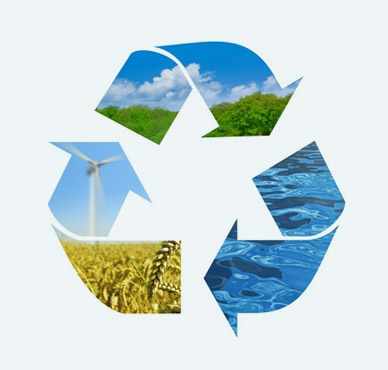Written by: United Nations Industrial Development Organization on May 20, 2013.
- Renewable energy sources most used for large-scale applications are hydropower, modern biomass, geothermal, wind and solar energy sources, with these being usually grid connected.
- Only about 5% of Africa’s hydropower potential of just over 1750 TWh has been exploited. The total hydropower potential for Africa is equivalent to the total electricity consumed in France, Germany, United Kingdom and Italy put together. The Inga River in the Democratic Republic of Congo (DRC) holds great potential for hydropower generation in Africa with an estimated potential of around 40,000 MW. In fact, the DRC alone accounts for over 50% of Africa’s hydropower potential while other countries with significant hydropower potential include Angola, Cameroon, Egypt, Ethiopia, Gabon, Madagascar, Mozambique, Niger and Zambia. Despite the low percentage use, large-scale hydropower so far provides over 50% of total power supply for 23 countries in Africa.
- Biomass energy can be used for such large-scale applications as provision of process heat, liquid fuels production, gasification, heat co-generation, biogas production and solid fuel production. Several agro-based industries in the continent, such as wood-based industries, palm produce, rice mills, sugar, and paper and pulp, use their waste to produce both process heat and power, which in most cases is used locally. Co-generation from agriculture waste holds great potential for Africa. Cogeneration contributes as much as 40% of the total electricity generated in Mauritius. With increased efficiency of use and better technologies, most of such facilities can produce significant power to be used for local demand or sold to the national grid. Presently, several countries in the continent produce sugar and have the potential of generating power for their own needs.
- Geothermal energy is an untapped renewable energy source that is abundantly present in many parts of
Africa. It has a potential of generating up to 14,000 MW from geothermal sources. However, only a few countries,
such as Kenya. have used it commercially. As of today, Kenya has installed up to 127 MW, amounting to about 17%
of the national power supply, followed by Ethiopia with a 7 MW installation. Plans to use potential of geothermal
energy in Uganda, Tanzania and Eritrea are at different stages.
- Globally, the use of wind energy for large-scale electricity production has been increasing faster than any
other renewable energy technologies over past decade. In 2007, new installations were about 21GW, even more
than hydropower. Africa still lags behind other regions and the development of wind energy projects is primarily
constrained by lack of precise information about wind potential. In terms of installed capacity at the beginning
of 2008, Africa only had about 476MW of installed wind energy generation capacity compared to global
estimate of 93,900MW. Countries developing large-scale wind energy projects so far include Morocco, Egypt,
Tunisia, South Africa, and Ethiopia.
- Most urban areas in Africa face serious problems with disposal of liquid and solid waste, which could be
converted to energy. Existing municipality liquid waste handling and treatment systems can be renovated to
capture methane produced, which could then be used to generate electricity to power the treatment plants; the
excess could be fed into the grid. Organic municipal solid waste could also be incinerated or gasified to produce
energy. Urban waste management is a major challenge in many African cities and heaps of rubbish is a common
site. High capital costs and lack of conducive institutional frameworks have hindered the development of plants
to convert urban waste to energy.
- Large-scale solar energy projects are very limited in Africa because of cost constraints. Detailed feasibility
studies have established that Africa has great potential for concentrated solar thermal power generation from
desert areas like the Sahara, Namib etc., with competitive power production costs around 4-6c/kWh. So far, only
South Africa operates a solar thermal power system plant, generating 0.5 MW. Egypt plans to install solar thermal
plant of 30 MW by 2010 and 300 MW by 2020. Several countries in Northern Africa are planning to develop
solar thermal plants of varying capacities buoyed by interest from European countries.

 JOIN DRIVERN TAXI AS PARTNER DRIVER TODAY!
JOIN DRIVERN TAXI AS PARTNER DRIVER TODAY!











